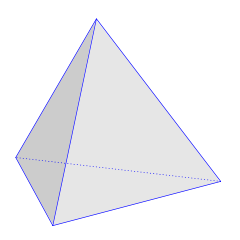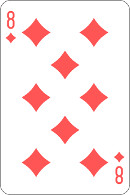
“None think the great unhappy but the great.” — Edward Young

“None think the great unhappy but the great.” — Edward Young

Any two lines drawn between opposite sides of a square and intersecting at right angles are equal.

In 1978 two families hatched a daring plan to escape East Germany: They would build a hot-air balloon and sail it by night across the border. In this week’s episode of the Futility Closet podcast we’ll follow their struggles to evade the authorities and realize their dream of a new life in the West.
We’ll also shuffle some vehicles and puzzle over a perplexing worker.

I do not like books. I believe I have the smallest library of any literary man in London, and I have no wish to increase it. I keep my books at the British Museum and at Mudie’s, and it makes me very angry if any one gives me one for my private library. I once heard two ladies disputing in a railway carriage as to whether one of them had or had not been wasting money. ‘I spent it in books,’ said the accused, ‘and it’s not wasting money to buy books.’ ‘Indeed, my dear, I think it is,’ was the rejoinder, and in practice I agree with it.
— Samuel Butler, Ramblings in Cheapside, 1890
This is fantastic — in 2017, 56 enthusiasts built an O-gauge model railway 71 miles long, connecting Fort William and the City of Inverness in the Scottish Highlands. At a scale of 46:1, that’s half the length of the Trans-Siberian Railway.
Only one journey was made on the completed railway. The locomotive Silver Lady departed Corpach Double Lock on June 23, 2017, and arrived, on time, at Inverness Castle on July 1.
Volunteer team leader Lawrence Robbins told the Daily Record, “Just because it’s bonkers doesn’t mean it’s a bad idea.”

A problem from the Tenth International Mathematical Olympiad, 1968:
Prove that in every tetrahedron there is a vertex such that the three edges meeting there have lengths which are the sides of a triangle.


In 1919, engineer James Cowan Smith bequeathed £55,000 to the National Gallery of Scotland.
He set two conditions. One was that the gallery provide for his dog Fury.
The other was that this picture of his previous dog Callum, by painter John Emms, always be hung in the gallery.
Both conditions were fulfilled.

In 1940 Bertrand Russell was invited to teach logic at the City College of New York.
A Mrs. Kay of Brooklyn opposed the appointment, citing Russell’s agnosticism and his alleged practice of sexual immorality.
In the lawsuit his works were described as “lecherous, libidinous, lustful, venerous, erotomaniac, aphrodisiac, irreverent, narrowminded, untruthful, and bereft of moral fiber.”
“Although he lost the case, the aging Russell was delighted to have been described as ‘aphrodisiac,'” writes Betsy Devine in Absolute Zero Gravity. “‘I cannot think of any predecessors,’ he claimed, ‘except Apuleius and Othello.'”
The quicksort computer sorting algorithm demonstrated with Hungarian folk dance, from Romania’s Sapientia University.
Also:
The four queens puzzle solved using ballet.
Binary search through flamenco dance.
Merge sort via Transylvanian-Saxon folk dance.
Selection sort using Gypsy folk dance.
(Via MetaFilter.)
01/19/2019 UPDATE: When Gavin Taylor showed these algorithms to his students at the United States Naval Academy, they asked whether they themselves could dance for extra credit. He said yes. So here are the U.S. Naval Academy midshipmen dancing the InsertionSort algorithm:
(Thanks, Gavin.)